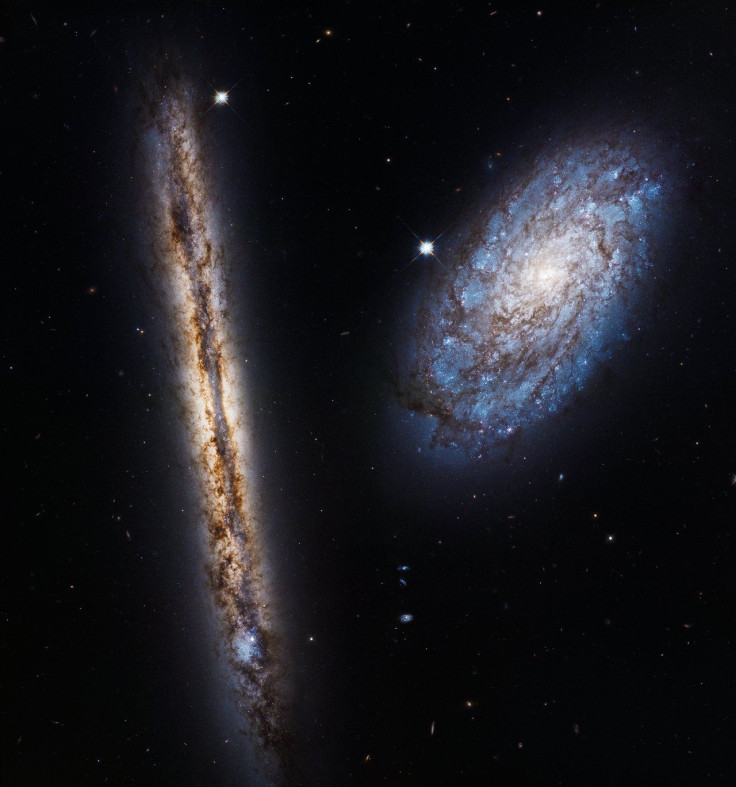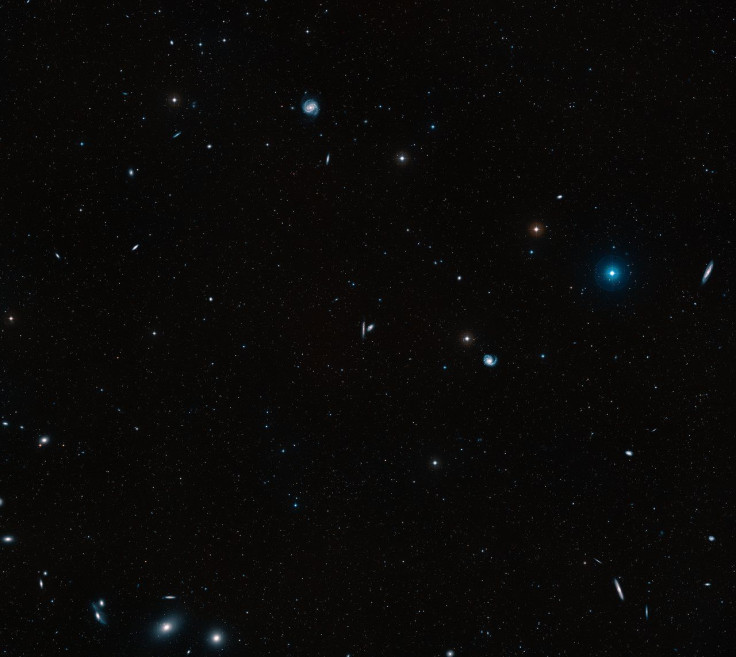NASA Marks Hubble's 27th Birthday With New Image Of Two Spiral Galaxies Just 7,000 Light-Years Apart

April 24 would mark the 27th anniversary of the launch of the Hubble Space Telescope. To commemorate the event, astronomers at NASA and the European Space Agency (ESA) have snapped a stunning new image of two galaxies that, at first glance, look very different but are very much alike.
The spiral galaxies, NGC 4302 and NGC 4298, are located 55 million light-years from Earth in the northern constellation of Coma Berenices. According to NASA, these galaxies, which are located in the Virgo cluster — a gravitationally bound cluster of nearly 2,000 galaxies — provide a glimpse of what the Milky Way would look like to observers looking at it from the outside.
“In NGC 4298, the telltale, pinwheel-like structure is visible, but it's not as prominent as in some other spiral galaxies. In the edge-on NGC 4302, dust in the disk is silhouetted against rich lanes of stars,” NASA explained in a statement accompanying the image. “Absorption by dust makes the galaxy appear darker and redder than its companion. A large blue patch appears to be a giant region of recent star formation.”
What makes these galaxies, located just 7,000 light-years from each other, interesting is their apparent lack of any gravitational interaction typically seen in galaxies located so close to each other.
“Only a faint bridge of neutral hydrogen gas — not visible in this image — appears to stretch between them. The long tidal tails and deformations in their structure that are typical of galaxies lying so close to each other are missing completely,” NASA said.

This could be explained if the two galaxies are recent arrivals to the cluster, and are currently falling in toward its center — a phenomenon that could also explain the faint tails of gas streaming from the galaxies.
This is not the first time NASA and ESA have released images to mark the telescope’s birthday. Last year, the space agencies released a new image of the aptly named “Bubble Nebula” located 7,100 light-years from Earth in the constellation Cassiopeia. The nebula was discovered by the British astronomer William Herschel way back in 1787 and was first captured by Hubble's Wide Field Planetary Camera in 1992.
© Copyright IBTimes 2024. All rights reserved.






















